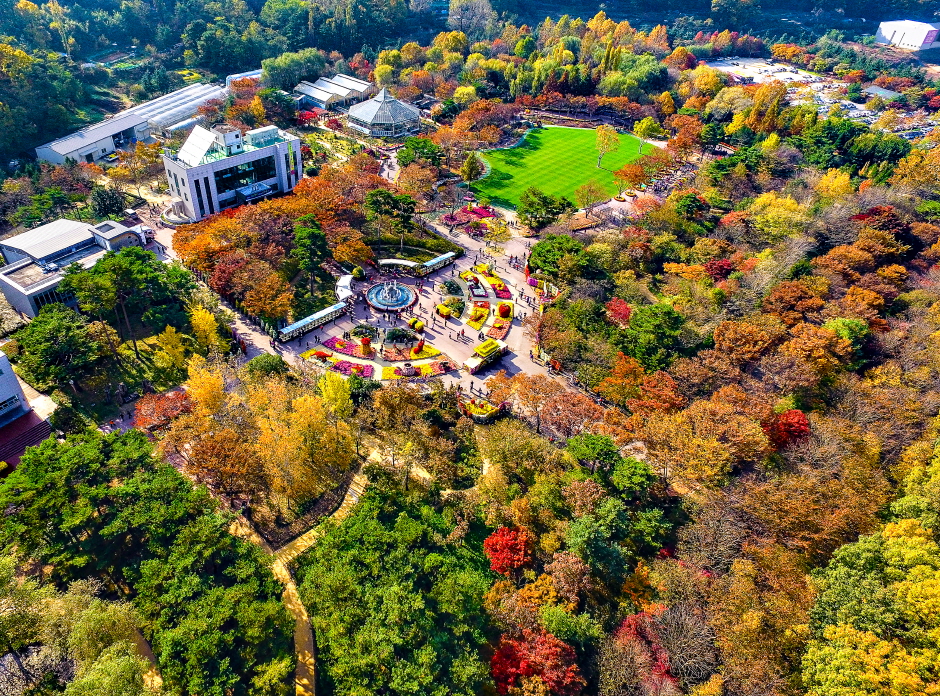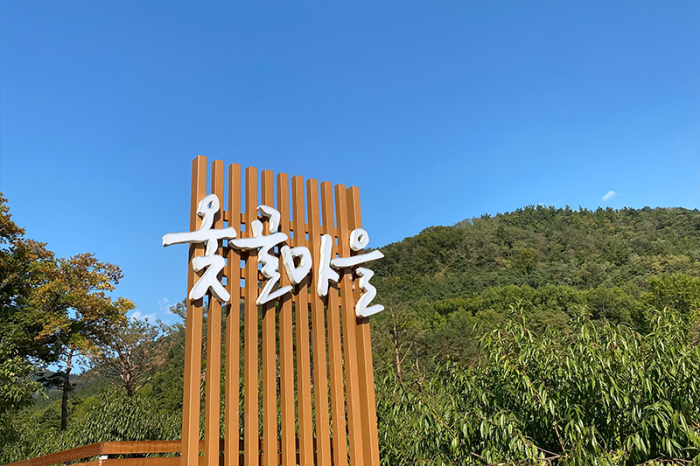Dalseong Marsh (대구 달성습지)
10.2Km 2025-06-10
88 Gura 1-gil, Hwawon-eup, Dalseong-gun, Daegu
Dalseong Marsh is located in the meeting point of Nakdonggang River, Geumghogang River, Jincheoncheon Stream, and Daemyeongcheon Stream. Spanning an area of 2 ㎢, the marsh comprises wetlands and freshwater lake where various seasonal aquatic plants are grown. It is also home to several different species of migratory birds.
Daegu Arboretum (대구수목원)
10.4Km 2023-11-17
342 Hwaam-ro, Dalseo-gu, Daegu
+82-53-803-7270
Daegu Arboretum is located at the site of an old sanitary landfill. The restoration of the area passed through many stages from 1996 until the opening in May 2002. It is home to more than thousands of species of plants including giant cacti, flowers, medicinal herbs, and trees in 21 gardens. The arboretum serves as an ecological education center and rest area for Daegu citizens. Ecology experience programs for students and young children are held regularly during summer vacation. Nearby attractions include Apsan and Duryu Parks, as well as Palgongsan and Biseulsan Mountains.
ER Donga - Suseong Branch [Tax Refund Shop] (ER 동아 수성)
10.7Km 2024-04-23
191, Jibeom-ro, Suseong-gu, Daegu
-
Hwawon Park (화원동산)
10.7Km 2024-04-08
40-14 , Samunjin-ro 1-gil, Dalseong-gun, Daegu
+82-53-659-4465
Hwawon Park, a vast park beside the Nakdonggang River, is steeped in history. The river, once bustling with Samunjin Quay, where ships laden with goods frequented, now features Samunjin Ferries. Visitors can access Dalseong Marsh Ecological Park via a floating walkway across the river. In the vicinity, the Samunjin Jumakchon Village offers traditional beverages and delicacies, including makgeolli (unrefined rice wine) and pajeon (green onion pancake). With well-maintained walking trails, cafés, and picnic spots, the park serves as an ideal destination for family outings.
Samunjin Jumakchon Village (사문진 주막촌)
11.1Km 2023-11-09
40-12 Samunjin-ro 1-gil, Hwawon-eup, Dalseong-gun, Daegu
Samunjin was the location of a ferry dock on the Nakdonggang River in the past. During the Japanese occupation, the area was turned into a recreation ground, which saw many people coming to enjoy leisure strolls. In November 2013, three hanok jumak (traditional dining establishment) were built at the site of the old dock and the current Samunjin Jumakchon Village was opened. The jumak serve a range of foods that were enjoyed in the past, such as makgeolli, gukbap, and buchujeon (chives pancake). The village is well-known as a place to enjoy the sunset.
Park Jiyun's Gachang Jinbang (박지연의 가창옛날찐빵본점)
11.3Km 2024-02-27
1099 Gachang-ro, Gachang-myeon, Dalseong-gun, Daegu
053-768-5768
Gachang Original Bread, a renowned steamed bun bakery in Daegu, is celebrated for its jjinppang (steamed buns), a beloved traditional snack in Korea. This shop's success inspired the opening of other establishments selling steamed buns and dumplings in the area, eventually leading to the creation of Gachang Jjinppang Street. Since its opening in 2000, the bakery has committed to selling only buns made on the same day, meticulously kneaded and rolled by hand. Their flagship products, jjinppang and handmade mandu, have gained such popularity that they often attract long lines of customers.
Village of the Nampyeong Mun Clan in Bon-ri (남평문씨본리세거지)
11.3Km 2021-03-16
16, Inheung 3-gil, Dalseong-gun, Daegu
+82-53-668-3162
The Village of the Nampyeong Mun Clan in Bon-ri was built on what used to be part of a temple, but was organized following a well-field system to make the area a residence for many generations. As of now, nine houses and two pavilions remain, as well as a low wall along the road.
The main building of the village is Subongjeongsa, located in the center of the area. It was used for meeting guests, as well as a gathering place for the family, and features beautiful gardens. Gwanggeodang Hall was an educational place for studies and refinement. Insumungo Storage Building preserves about 10,000 books and clan treasures. It started out as a small building but later was expanded, including an additional building constructed just to read books.
Myeongpum Otgol 1616 Cooperative Society (명품옻골 1616 협동조합)
11.8Km 2024-02-29
195-5 Otgol-ro, Dong-gu, Daegu
+82-53-983-1040
Myeongpum Otgol 1616 Cooperative Society is a village enterprise operating in the oldest Otgol Village in Daegu. Utilizing traditional hanok houses dating back 200 years, they offer hanokstay experiences, guided village tours, and various traditional Korean experiences such as Tea Confectionery Experience, Hanbok Experience, Village School Experience, Rice Cake Pounding Experience, Tuho (Arrow-throwing), Jegichagi, Biseokchigi. Visitors can also enjoy traditional beverages at the hanok café.
Museum of Natural Dye Arts (자연염색박물관)
12.2Km 2021-03-19
17, Pagye-ro 112-gil, Dong-gu, Daegu
+82-53-981-4330
The Museum of Natural Dye Arts was formed to collect and preserve the traditional way of dyeing, as well as inform the high quality of Korean natural dye to the world. The museum has various art products from around the world. Divided into two floors, Ahwon Gallery on the first floor showcases replicas of ancient dyeing tools and provides information on the natural dyeing process. The Relic Hall on the second floor displays pieces of ancient artwork including fabric, clothes, pillows, blankets and accessories, all made using different methods such as dyeing, embroidery, quilting, knotting and sewing.
Puruncha Tea Culture Research (사단법인 푸른차문화연구원)
12.4Km 2024-04-23
41 Universiad-ro 11-gil, Suseong-gu, Daegu
+82-507-1377-1114
Puruncha Tea Culture Research opened in 1996 to promote Korea's traditional culture and etiquette through tea ceremonies and other programs related to tea. The center uses 100% Korean tea in all programs, supporting local farmers and the local economy.


![ER Donga - Suseong Branch [Tax Refund Shop] (ER 동아 수성)](http://tong.visitkorea.or.kr/cms/resource/46/2884146_image2_1.jpg)





 English
English
 한국어
한국어 日本語
日本語 中文(简体)
中文(简体) Deutsch
Deutsch Français
Français Español
Español Русский
Русский